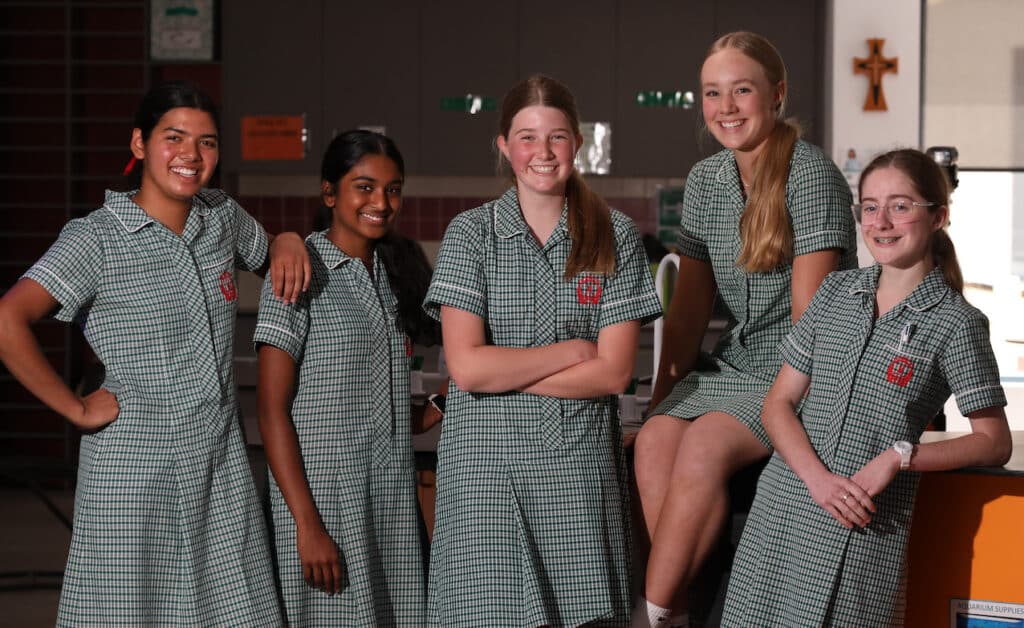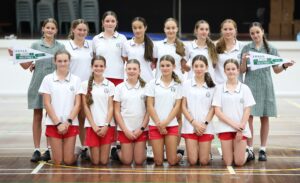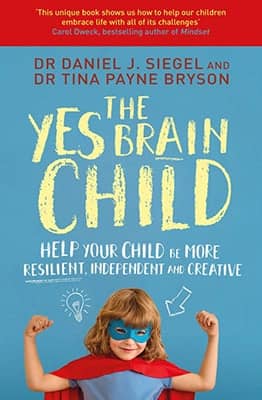Young Physicists Win Gold & Silver

Congratulations to Year 10 students Anika Zammit, Mackenzie Smith, Emily Molony, Grace Westerhout and Sanjana David Selvendra, who recently competed in the Junior Young Physicist Tournament. All participants came away with medals. Anika and Mackenzie won gold, while Emily, Grace and Sanjana were silver medallists.
The Junior Young Physicist Tournament is a branch of the International Young Physicist Tournament. It involves students up to Year 10 participating in a team with a maximum of five students. The girls were invited to enter based on their performance in the Year 10 physics class.
Below is the list of five problems based on a physical phenomenon students could choose from and research before the tournament.
Problem 1: Probability
A coin is held above a horizontal surface. What initial conditions will ensure equal probability of heads and tails when the coin is dropped and has come to rest?
Problem 2: Rotating Spring
A helical spring is rotated about one of its ends around a vertical axis. Investigate the expansion of the spring with and without an additional mass attached to its free end.
Problem 3: Rising Bubble
A vertical tube is filled with a viscous fluid. On the bottom of the tube, there is a large air bubble. Study the bubble rising from the bottom to the surface.
Problem 4: Hearing Light
Coat one-half of the inside of a jar with a layer of soot and drill a hole in its cover. When light from a light bulb connected to AC hits the jar’s black wall, a distinct sound can be heard. Explain and investigate the phenomenon.
Problem 5: Hoops
An elastic hoop is pressed against a hard surface and then suddenly released. The hoop can jump high in the air. Investigate how the height of the jump depends on the relevant parameters.
Students needed to study the theory behind their chosen problem, run experiments with no limitations in depth and breadth, and then present their findings. They had to link the theory and experiment and discuss different aspects.
The girls chose their problems and worked on them throughout the Term 3 holidays. Once back at school, the group ran more experiments after school and finalised the data analysis and the relationship between the theory and the findings of their experiment.
During the tournament, each student had 10 minutes to present their report, followed by 10 minutes where another school’s team challenged them. In the end, the jury panel challenged the reporter as well. Each student had two roles: reporter and opponent for another team. It was more of a physics fight!
The girls were scored based on how they delivered their report and answered questions from the other team and juries, as well as how well they challenged someone else’s report as the opponent.
Participant Grace Westerhout said, “The Physics problems we researched involved concepts we hadn’t explored yet within our Year 10 curriculum, which made the tournament both challenging and very interesting.”
Year 10 Physics Teacher Samantha Dodras guided the students throughout the entire process. “The girls invested a commendable effort into this tournament. The nature of the tournament, which was based on a scientific debate, was quite a new approach, hence stressful to some extent. However, their teamwork in tackling the challenges was praiseworthy.”, she said.
We look forward to hearing about our Years 11 and 12 physics students who will participate in the International Tournament in 2023.

Combating The Attention Span Crisis In Our Students – Jennifer Oaten
It is no secret that attention spans have been steadily declining, especially among younger generations growing up immersed in digital technology. The average person’s attention span when using a digital device has plummeted from around two and a half minutes back in 2004 to just 47 seconds on average today – a dramatic 66% decrease over the past two decades.

Weekly Wrap Up: Term 2, Week 2, 2024
Week 2 has come to an end! This Weekly Wrap Up features highlights from Scuba Diving Club, the Sisterhood Series, and Boarding ANZAC Service.

Santa Maria Teams Shine in Term 1 Sports
Santa Maria had a huge number of girls in the IGSSA AFL and Volleyball competition with strong results for a number of teams.
- Adaptability, ConnectingLearning2Life, CriticalThinking, Featured, Learning4Life, ProblemSolving, Resilience
Author: Santa Maria College
Santa Maria College is a vibrant girls school with a growing local presence and reputation. Our Mission is to educate young Mercy women who act with courage and compassion to enrich our world. Santa Maria College is located in Attadale in Western Australia, 16 km from the Perth CBD. We offer a Catholic education for girls in Years 5 – 12 and have 1300 students, including 152 boarders.






